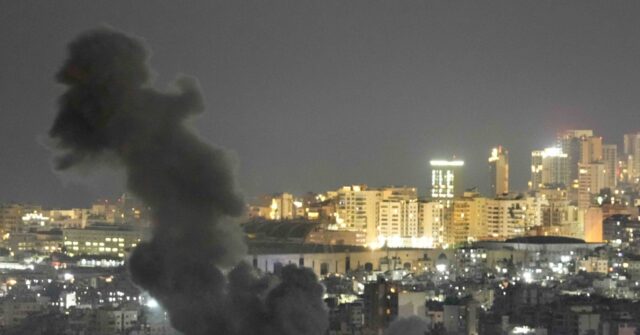The Israel Defense Forces (IDF) have escalated their military operations against Hezbollah, responding to a series of attacks from the Iranian-backed organization that began on October 8. This recent strategy by the IDF targets institutions linked to Hezbollah’s financial and economic support, marking a significant shift in their approach to the conflict. In an urgent announcement, IDF spokesman Rear Admiral Daniel Hagari warned that there had been numerous projectiles fired at northern Israel and that immediate evacuation advisories would be issued for residents in Beirut and other areas associated with Hezbollah’s funding activities. He emphasized the need for civilians to distance themselves from these locations as the IDF prepares to launch targeted strikes. The spokesperson indicated that further details would be disclosed in the upcoming days regarding the methods by which Iran allegedly finances Hezbollah’s actions via civilian and non-governmental organization (NGO) fronts.
The IDF’s current operations represent a structured progression in their military strategy against Hezbollah, which can be divided into four distinct phases. Initially, the IDF engaged in simple retaliatory strikes, returning fire and targeting weapons depots while addressing isolated commanders. The second phase involved targeting high-ranking members of Hezbollah’s leadership within Beirut. Following that, a ground offensive commenced in late September, intensifying military engagement in the region. The current focus on financial institutions delineates a new phase, with the IDF aiming to undermine both the operational strength and financial backbone of Hezbollah. This strategic pivot emphasizes the importance of economic resources in supporting terrorist activities, recognizing the necessity of targeting such infrastructures to cripple organizations like Hezbollah.
As the conflict intensifies, the IDF plans to provide the public with comprehensive updates on the outcomes of their operations against Hezbollah’s financing channels. These updates will likely detail how civilian entities have been exploited by Iran to fund terrorist activities, exposing the intertwining of legitimate civil institutions with covert support for violence. The planned strikes and the potential disruption of financial flows serve to highlight an ongoing effort not just to assert military dominance but to also combat the root economic factors that sustain terrorist organizations. This multifaceted approach aims to dismantle Hezbollah’s operational capabilities while also addressing the broader support system that enables their activities.
IDF Arabic spokesperson Lt. Col. Avichay Adraee echoed similar warnings through social media, underscoring the urgency of the situation and the imminent military actions. The emphasis on evacuating civilians suggests a heightened awareness of the risks involved for non-combatants in conflict areas and reflects the IDF’s commitment to minimizing collateral damage during their operations. The nature of these warnings shows a blend of military urgency and a recognition of the human impact of ongoing hostilities, as both sides grapple with the consequences of their tactical decisions.
Amidst these developments, the implications of targeting financial institutions extend beyond immediate military results. By dismantling Hezbollah’s funding mechanisms, Israel aims to weaken not only the organization’s capacity to wage war but also its long-term viability. This financial assault introduces a new dynamic in warfare where economic elements are considered equally as critical as military strength. The IDF’s announcement indicates a transition to a strategic mindset that recognizes the necessity of addressing the broader context of terrorism, where financing becomes as crucial as direct military engagement.
In summary, the IDF’s recent actions against Hezbollah signal a pivotal moment in their military strategy, moving towards a more comprehensive confrontation that includes financial targets. This new phase reflects an understanding of the interconnectedness between military action and economic support for terrorism. As operations continue and further details emerge, there is an opportunity for the international community to observe the complexities of modern warfare, where the battlefield extends beyond land conflicts to include financial networks that sustain militant organizations. These developments raise critical questions about the role of civilian institutions in conflict zones and the responsibilities of governments in regulating entities that may serve as conduits for illicit funding.

